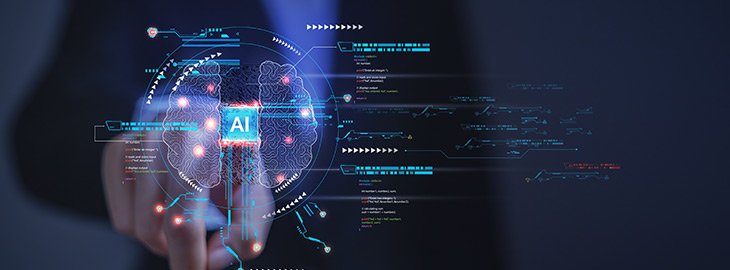
Conventional cybersecurity management solutions are becoming outdated, unable to handle the exponential growth of sophisticated security threats. Plus, financial and talent constraints impede the ability of security teams to expand.
Given those difficult circumstances, how can security teams improve their capacity to minimize data breaches even amid today’s increasingly complex attack surfaces? Enter cybersecurity automation.
In this article you’ll learn why cybersecurity automation is important, different types of security automation tools, and how you can keep your information secure with ZenGRC.
Cybersecurity automation explained
Cybersecurity automation is a concept used to describe advanced systems powered by artificial intelligence (AI) and machine learning (ML), and it involves exactly what the name implies: automating cybersecurity processes so they run faster and more efficiently.
With cybersecurity automation, organizations deal with (and disarm) cyber threats before those threats can disrupt your operations. Automation can also help you fight even the highly sophisticated technologies that cybercriminals now use to infiltrate networks and systems.
Cybersecurity automation takes human-driven and repeatable tasks that could be handled by the devices without human interaction, and automates that work. Put another way, cybersecurity automation streamlines manual and time-consuming tasks into automated workflows, making network security processes more efficient and less prone to human error. With enhanced efficiency, faster decisions can be made, which also can improve an organization’s entire security posture.
Can cybersecurity be automated?
Sure it can. For example, automation can monitor and scan networks for security loopholes and potential vulnerabilities. This can be done by using software tools such as network scanners and vulnerability management platforms, which are designed to detect and report security issues automatically. Once a vulnerability is found, the tool generates a report that security teams can use to assess the severity of the issue and determine a solution to mitigate it.
Automated compliance monitoring is another use case. This involves automation to monitor systems and networks for compliance with industry regulations and standards. Automated compliance monitoring makes it easy for organizations to identify and handle potential compliance problems, and reduce the risk of fines and penalties.
You can also automate the process for responding to security incidents. Automated incident response systems use pre-planned and custom rules to respond to an incident, all without human intervention. This can help organizations respond to incidents more quickly and reduce the overall impact of a security incident. Other benefits of automated incident response are optimized threat intelligence, streamlined operations, and automated reporting and metrics capabilities.
Why is cybersecurity automation important?
Effective protection against cyberattacks requires the implementation of automated systems that can analyze data in real-time and provide a comprehensive view of all activity happening within an organization’s network. The advantages of using automated cybersecurity systems include:
Increased efficiency. Cybersecurity automation allows for the rapid detection and response to potential threats, reducing the time it takes to mitigate them.
Improved accuracy. Automated systems can process massive amounts of data and uncover patterns that may be difficult for humans to discover, leading to fewer false positives or negatives.
24/7 monitoring. Automated systems can monitor networks and systems continuously for potential threats, providing round-the-clock protection.
Scalability. Automation can be used to scale security operations to satisfy the requirements of organizations of all sizes, allowing for more effective security management while keeping costs as low as possible (certainly lower than hiring more staff).
What are security automation tools?
There are different types of security automation tools.
Security information and event management (SIEM) tools
Organizations invest in SIEM solutions to streamline visibility across their organization’s environments, investigate log data for incident response to cyberattacks and data breaches, and adhere to local and federal compliance mandates.
SIEM solutions work by aggregating log and event data produced from applications, devices, networks, infrastructure, and systems to make an analysis and provide a comprehensive view of an organization’s IT environment.
Security orchestration, automation, and response (SOAR) tools
Security orchestration, automation, and response (SOAR) refers to a set of software solutions that enable organizations to streamline security operations in three major areas: threat management, security incident response, and security operations automation.
Large organizations use SOAR tools extensively since the organizations tend to have a great number of security systems and recurring events that need to be taken. These security tools typically run automatically and offer the ability to automate incident response processes through the use of standardized playbooks.
Vulnerability management tools
Vulnerability management tools can automatically scan IT resources for vulnerabilities, helping organizations to identify such weaknesses, classify them, prioritize the risks, and suggest remediation activities.
Vulnerability management solutions handle security in a different way compared to firewalls, antivirus, and anti-malware software, as they are built to combat cyberattacks on the network as they occur.
Endpoint protection tools
An endpoint security solution tracks, monitors, and manages an organization’s “endpoints,” including network connections, PCs, Internet of Things (IoT) devices, cloud-based applications, and services, to keep them safe from ransomware, malware attacks, and other cybersecurity threats.
Some of the main categories of endpoint protection tools include anti-malware solutions, mobile device management software (MDM), endpoint detection and response (EDR) software, and data loss prevention (DLP) software.
Keep your information secure with ZenGRC
ZenGRC offers a comprehensive solution for assuring the security of your sensitive data. With its user-friendly interface, ZenGRC simplifies the complexity of managing governance, risk, and compliance, allowing you to focus on your core business activities. It provides robust tools for monitoring and auditing your information security posture, ensuring adherence to industry standards and regulatory requirements.
ZenGRC’s real-time reporting and analytics give you a clear view of your risk landscape, enabling proactive risk management and decision-making. By leveraging ZenGRC, businesses can enhance their information security strategies, keeping their data secure and their operations compliant.
Schedule a demo today to see how ZenGRC can help you achieve “Zen-mode” compliance!
